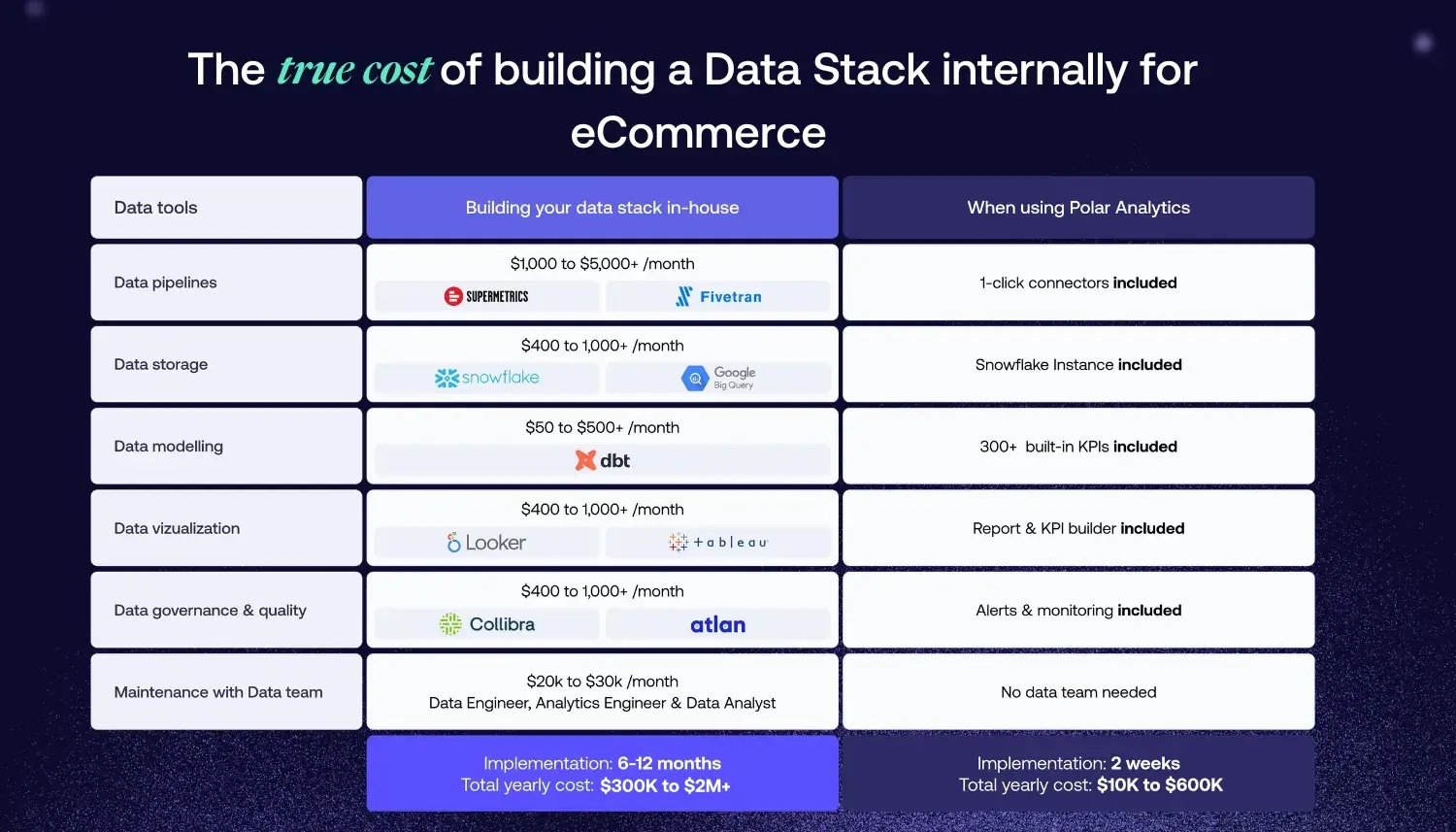Measuring incrementality sounds simple. Run an ad. Hold back a control group. Compare results. But in practice, the difference between surface-level attribution and rigorous causal testing can determine whether a campaign scales profitably or wastes budget.
That’s why more ecommerce brands are turning to data partners. Not just analytics tools. True thought partners who can help them navigate decisions where the stakes are high and the metrics alone don’t tell the full story.
Why Optimized Targeting Breaks the Rules of a Real A/B Test
A connected TV (CTV) marketing platform recently introduced a new incrementality report for ecommerce brands. The feature was described as a proper A/B test. A Polar brand was running campaigns through that platform and had planned to measure causal impact with a lift test using Polar’s tool.
Before proceeding, they were invited to rely on the CTV marketing platform’s new reporting feature instead. The assumption was that it would deliver the same rigor with greater scale and less complexity. So the brand paused their experiment with Polar’s incrementality testing tool and waited for the results.
What came back was not what they expected.
How Mislabeling a Holdout Group Can Skew Results
Here’s a simplified view of the CTV platform’s testing method:
- Define a large eligible audience (for example, 10 million users).
- Randomly assign 10 percent of that audience to a holdout group, who are never exposed to the ad.
- Target the remaining 90 percent, but only reach a small subset (for example, 1 million users).
- Compare conversions between the users who were reached with the ad and those in the holdout group.
The problem is not the format. The problem lies in who actually ends up in the “reached” group.
These users are selected by algorithms that optimize for performance. In other words, the ad is shown to people who are already more likely to convert. The control group, by contrast, is a truly random sample. This creates a built-in bias.
This approach doesn’t isolate the effect of the ad. It reflects the fact that the platform is good at finding high-value users. That may be helpful for delivery, but it is not valid for measuring lift.
Think about a pharmaceutical trial. Suppose a new drug is being tested. Out of 10,000 patients, 1,000 are randomly held back in a control group. That part is fine. But now, the drug is only administered to the 1,000 healthiest people in the remaining group. Unsurprisingly, they recover at higher rates.

It may look like the drug works. But the recovery isn’t driven by the drug. It is driven by the fact that the treatment group was already more likely to get better.
That’s the risk when a test compares an optimized audience to a random one. The outcome gets attributed to the ad when it may actually come from who was selected to see it.
Why It Takes More Than a Dashboard to Measure Impact
Incrementality is more than just another metric. It sits at the center of every high-stakes marketing decision:
- Where should budget go next quarter?
- Which channels drive real net-new sales versus cannibalizing existing demand?
- What is the true cost of acquisition on a given channel?
Answering those questions requires more than attribution. It requires an understanding of causal inference, bias, variance, and measurement strategy.
Many analytics tools surface dashboards. But a data thought partner can audit the logic behind the numbers, test for flaws in methodology, and help brands avoid costly misinterpretations.
How to Spot a Data Thought Partner
When measurement decisions carry real weight, the difference between a vendor and a partner is clear. A partner will:
- Help choose the right test design (geo-lift, user-level randomization, or holdouts).
- Validate assumptions behind the methodology.
- Flag issues like selection bias or overfitting before results are published.
- Tie measurement directly to business questions like profitability, retention, and media mix planning.
Thought partners shouldn’t focus on looking technical, but on being accountable to outcomes.
Clarity Isn’t in the Report, but in the People Who Read It Critically
Tools alone don’t create confidence. Methodology does. When test design breaks down or assumptions go unexamined, even the cleanest dashboards can lead teams in the wrong direction.
The next time a platform offers built-in incrementality results, the most important question may not be “what does the metric say?” but “how was it measured?”
Ecommerce teams deserve clarity. That comes from having someone in the room who knows how to look under the hood and isn’t afraid to ask what others might miss.
Want to learn how to design a reliable incrementality test from the ground up? Read this guide on building sound geo-lift experiments.















%201.svg)





















